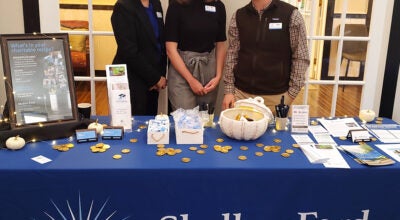How to time your mammogram around the COVID-19 vaccine
Published 12:00 am Thursday, March 11, 2021
|
Getting your Trinity Audio player ready...
|
Lymph nodes can swell as body builds antibodies
By Gina DiPietro
Novant Health
Women should consider timing their mammogram around the COVID-19 vaccine, according to new guidelines from the Society of Breast Imaging (SBI).
If possible, and when it does not delay care, the SBI said annual breast exams should be scheduled before the first dose of a COVID-19 vaccination or four to six weeks following the second dose.
Vaccines of all types can result in temporary swelling of the lymph nodes, which may be a sign the body is making antibodies. While this is a side effect and expected response to a vaccine, a change in size or consistency of the lymph nodes — known as axillary lymphadenopathy — in the armpit area can also be a sign of breast cancer or other types of cancer.
In clinical trials, up to 16% of patients experienced axillary lymphadenopathy after receiving the COVID-19 vaccine, said Dr. Nicole Abinanti, director of women’s imaging at Mecklenburg Radiology Associates. Swelling can occur within two to four days of receiving the vaccine and may last 10 days or more. If swelling persists or you have concerns regarding any swelling, notify your physician immediately.
“Typically, if we see axillary lymphadenopathy in a screening mammogram, the patient will come back for an ultrasound and if the lymph nodes are still enlarged, we recommend a biopsy,” Abinanti said. “The current SBI guidance is not to go right to biopsy if there has been a recent vaccine given on the side of the enlarged lymph nodes, but to offer the patient a follow-up appointment about eight to 12 weeks after the second dose of the COVID-19 vaccine to make sure the lymph nodes are decreasing in size.”
This follow-up appointment can typically be avoided by timing the COVID-19 vaccine after a mammogram or scheduling your screening mammogram six weeks after your second vaccine dose. However, if you or your health care provider have a breast-related concern, do not delay your breast diagnostic exam.
When women get a mammogram, Abinanti suggested they notify their physician if they received the vaccine, as well as which arm it was administered in. This extends to people who receive annual magnetic resonance imaging, also known as an MRI.
“We are asking all of our patients if they’ve gotten the vaccine. So, this doesn’t only apply to patients that are getting mammograms. “Abinanti said. “It also applies to women receiving a high-risk screening MRI.”
She added that any woman — regardless of age — who experiences a lump under the armpit area following a COVID-19 vaccine should consult with their doctor.
“Let your physician know and make sure they follow you until it resolves, because there could be something else going on and it just happens to coincide with the COVID-19 vaccine. We want to make sure people don’t ignore signs and symptoms that could be potentially significant,” Abinanti said.
Breast cancer outcomes are better when it’s detected and treated early. Novant Health recommends that women who are asymptomatic with an average risk of breast cancer receive an annual mammogram beginning at age 40. Those with a significant family history should speak to their physician or have a high-risk assessment done to determine if they need to start earlier screening.



